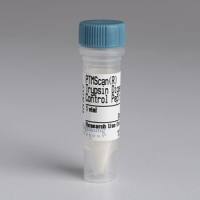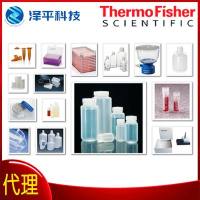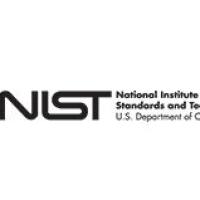Cigarette Smoke Exposure as a Model of Inflammation Associated with COPD
互联网
- Abstract
- Table of Contents
- Materials
- Figures
- Literature Cited
Abstract
Chronic obstructive pulmonary disease (COPD) is characterized by progressive airflow limitation resulting from inflammation?driven pathologies in the lungs that are a consequence of smoking over many years. Given that the disease is increasing globally, understanding the mechanism by which cigarette smoke (CS) causes lung inflammation and exploiting that knowledge to develop effective treatments is urgently required. Animal models of CS exposure are commonly used to examine the inflammatory processes that may be involved in the development of COPD. The protocols described in this unit detail the development of preclinical models of CS?driven lung inflammation. These systems can be utilized to investigate the role of various biological pathways in CS?mediated inflammation and to assess the efficacy of new therapeutic strategies for treating COPD. Curr. Protoc. Pharmacol. 60:14.24.1?14.24.18. © 2013 by John Wiley & Sons, Inc.
Keywords: animal models; airways; COPD; emphysema; inflammation; lung
Table of Contents
- Introduction
- Basic Protocol 1: Setup of the Cigarette Smoke Exposure System
- Basic Protocol 2: Cigarette Smoke Exposure Protocol
- Basic Protocol 3: Determination of Lung Inflammation Following CS Exposure
- Commentary
- Literature Cited
- Figures
- Tables
Materials
Basic Protocol 1: Setup of the Cigarette Smoke Exposure System
Materials
Basic Protocol 2: Cigarette Smoke Exposure Protocol
Materials
Basic Protocol 3: Determination of Lung Inflammation Following CS Exposure
Materials
|
Figures
-

Figure 5.64.1 Diagram of the cigarette smoke exposure system: front view. View Image -

Figure 5.64.2 Diagram of the cigarette smoke exposure system: rear view. View Image -

Figure 5.64.3 (A ) Rear view of the cigarette smoke exposure system. (B ) Rear view with detailed connections (inlets/outlets). Numbers 1, 2, and 3 in (B) correspond to the connections described in , steps 8 to 10. View Image -

Figure 5.64.4 Front view of total suspended particulate (TSP) sampling equipment with details of components and connections. View Image -

Figure 5.64.5 Characterization of the airway inflammation after cigarette smoke (CS) challenge. (A ) Male C57BL/6 mice were challenged for 3 days with CS (250, 500, or 750 ml/min, 1 hr, twice daily, 4 hr apart) or ambient air. Bronchoalveolar lavage fluid (BALF) samples were collected 24 hr after the final challenge. Graph illustrates the numbers of neutrophils in the BALF; the arrow indicates the CS challenge level (500 ml/min) chosen for further work. Data are presented as mean ± SE of n = 6 to 8 observations. (B ) Mice were challenged for 3 days with CS (500 ml/min, 1 hr, twice daily) or ambient air. BALF samples were collected at increasing time points after the final challenge. Graph illustrates the numbers of neutrophils in the BALF. Data are presented as mean ± SE of n = 6 to 8 observations. Figure adapted from Eltom et al. (). View Image -

Figure 5.64.6 Characterization of the airway inflammation after cigarette smoke (CS) challenge. Mice were challenged for 3 to 28 days with CS (500 ml/min, 1 hr, twice daily, 4 hr apart) or ambient air. Bronchoalveolar lavage fluid (BALF) samples were collected 24 hr after the final challenge. The numbers of neutrophils, macrophages, and lymphocytes are shown in (A ), (B ), and (C ), respectively. Data are presented as mean ± SE of n = 6 to 8 observations. Figure adapted from Eltom et al. (). View Image -

Figure 5.64.7 Characterization of the airway inflammation after cigarette smoke (CS) challenge. Mice were challenged for 14 days with CS (500 ml/min, 1 hr, twice daily, 4 hr apart) or ambient air. Bronchoalveolar lavage fluid (BALF) samples were collected at various time points after the final challenge. The numbers of neutrophils, macrophages, and lymphocytes are shown in (A ), (B ), and (C ) respectively. Data are presented as mean ± SE of n = 6 to 8 observations. View Image -

Figure 5.64.8 Role of P2X7 receptor in cigarette smoke (CS)‐induced airway inflammation. Male C57BL/6 mice were challenged for 3 days with CS (500 ml/min, 1 hr, twice daily, 4 hr apart) or ambient air. Bronchoalveolar lavage fluid (BALF) samples were collected 24 hr after the final challenge. (A ) ATP levels in the BALF (ATPlite Luminescence Assay System, PerkinElmer). (B ) Amount of IL‐1β in the BALF (mouse ELISA, R&D Systems). (C ) Numbers of neutrophils in the BALF (differential counts of stained cytospin preparations). Data are presented as mean ± SE of n = 6 observations. # = statistical significance between air and CS challenge, Mann‐Whitney, P <0.05, * = statistical significance between wild‐type and P2X7 ‐/‐ mice, Mann‐Whitney, P <0.05. View Image
Videos
Literature Cited
| Literature Cited | |
| Church, D.F. and Pryor, W.A. 1985. Free‐radical chemistry of cigarette smoke and its toxicological implications. Env. Health Perspect. 64:111–126. | |
| Churg, A., Wang, R.D., Tai, H., Wang, X., Xie, C., and Wright, J.L. 2004. Tumor necrosis factor‐{alpha} drives 70% of cigarette smoke‐induced emphysema in the mouse. Am. J. Respir. Crit. Care Med. 170:492‐498. | |
| Churg, A., Wang, R., Wang, X., Onnervik, P.O., Thim, K., and Wright, J.L. 2007. Effect of an MMP‐9/MMP‐12 inhibitor on smoke‐induced emphysema and airway remodelling in guinea pigs. Thorax 62:706‐713. | |
| Churg, A., Cosio, M., and Wright, J.L. 2008. Mechanisms of cigarette smoke‐induced COPD: Insights from animal models. Am. J. Physiol. Lung Cell Mol. Physiol. 294:612‐631. | |
| D'hulst, A.I., Vermaelen, K.Y., Brusselle, G.G., Joos, G.F., and Pauwels, R.A. 2005. Time course of cigarette smoke‐induced pulmonary inflammation in mice. Eur. Respir. J. 26:204‐213. | |
| Eltom, S., Stevenson, C.S., Rastrick, J., Dale, N., Raemdonck, K., Wong, S., Catley, M.C., Belvisi, M.G., and Birrell, M.A. 2011. P2X7 Receptor and caspase 1 activation are central to airway inflammation observed after exposure to tobacco smoke. PLoS One 6:e24097. | |
| Gaschler, G.J., Skrtic, M., Zavitz, C.C.J., Lindahl, M., Onnervik, P‐O., Murphy, T.F., Sethi, S., and Stämpfli, M.R. 2009. Bacteria challenge in smoke‐exposed mice exacerbates inflammation and skews the inflammatory profile. Am. J. Respir. Crit. Care Med. 179:666‐675. | |
| Groneberg, D.A. and Chung, K.F. 2004. Models of chronic obstructive pulmonary disease. Respir. Res. 5:18. | |
| Guerassimov, A., Hoshino, Y., Takubo, Y., Turcotte, A., Yamamoto, M., Ghezzo, H., Triantafillopoulos, A., Whittaker, K., Hoidal, J.R., and Cosio, M.G. 2004. The development of emphysema in cigarette smoke‐exposed mice is strain dependent. Am. J. Respir. Crit. Care Med. 170:974‐980. | |
| Hautamaki, R.D., Kobayashi, D.K., Senior, R.M., and Shapiro, S.D. 1997. Requirement for macrophage elastase for cigarette smoke‐induced emphysema in mice. Science 277:2002‐2004. | |
| Kang, M‐J., Lee, C.G., Lee, J‐Y., Dela Cruz, C.S., Chen, Z.J., Enelow, R., and Elias, J.A. 2008. Cigarette smoke selectively enhances viral PAMP‐ and virus‐induced pulmonary innate immune and remodelling responses in mice. J. Clin. Invest. 118:2771‐2784. | |
| Lopez, A.D. and Murray, C.C.J.L. 1998. The global burden of disease, 1990‐2020. Nat. Med. 4:1241‐1243. | |
| Mahadeva, R. and Shapiro, S.D. 2002. Chronic obstructive pulmonary disease 3: Experimental animal models of pulmonary emphysema. Thorax 57:908‐914. | |
| Michaud, C.M., Murray, C.J., and Bloom, B.R. 2001. Burden of disease—Implications for future research. JAMA 285:535‐539. | |
| Morris, A., Kinnear, G., Wan, W‐Y.H., Wyss, D., Bahra, P., and Stevenson, C.S. 2008. Comparison of cigarette smoke‐induced acute inflammation in multiple strains of mice and the effect of a matrix metalloproteinase inhibitor on these responses. J. Pharmacol. Exp. Ther. 327:851‐862. | |
| Ofulue, A.F., Ko, M., and Abboud, R.T. 1998. Time course of neutrophil and macrophage elastinolytic activities in cigarette smoke‐induced emphysema. Am. J. Physiol. 275:1134‐1144. | |
| Ogg, C.L. 1964. Determination of particulate matter and alkaloids (as nicotine) in cigarette smoke. J. Assoc. Official Agricul. Chem. 47:356‐362. | |
| Stevenson, C.S. and Birrell, M.A. 2011. Moving towards a new generation of animal models for asthma and COPD with improved clinical relevance. Pharmacol. Ther. 130:93‐105. | |
| Stevenson, C.S., Coote, K., Webster, R., Johnston, H., Atherton, H.C., Nicholls, A., Giddings, J., Sugar, R., Jackson, A., Press, N.J., Brown, Z., Butler, K., and Danahay, H. 2005. Characterization of cigarette smoke‐induced inflammatory and mucus hypersecretory changes in rat lung and the role of CXCR2 ligands in mediating this effect. Am. J. Physiol. Lung Cell Mol. Physiol. 288:514‐522. | |
| Stevenson, C.S., Docx, C., Webster, R., Battram, C., Hynx, D., Giddings, J., Cooper, P.R., Chakravarty, P., Rahman, I., Marwick, J.A., Kirkham, P.A., Charman, C., Richardson, D.L., Nirmala, N.R., Whittaker, P., and Butler, K. 2007. Comprehensive gene expression profiling of rat lung reveals distinct acute and chronic responses to cigarette smoke inhalation. Am. J. Physiol. Lung Cell Mol. Physiol. 293:1183‐1193. | |
| Stockley, R.A., Mannino, D., and Barnes, P.J. 2009. Burden and pathogenesis of chronic obstructive pulmonary disease. Proc. Am. Thorac. Soc. 6:524‐526. | |
| Sullivan, S.D., Ramsey, S.D., and Lee, T.A. 2000. The economic burden of COPD. Chest 117:5S‐9S. | |
| Vlahos, R., Bozinovski, S., Jones, J.E., Powell, J., Gras, J., Lilja, A., Hansen, M.J., Gualano, R.C., Irving, L., and Anderson, G.P. 2006. Differential protease, innate immunity, and NF‐kappaB induction profiles during lung inflammation induced by subchronic cigarette smoke exposure in mice. Am. J. Physiol. Lung Cell Mol. Physiol. 290:931‐945. | |
| Wan, W.Y., Morris, A., Kinnear, G., Pearce, W., Mok, J., Wyss, D., and Stevenson, C.S. 2010. Pharmacological characterisation of anti‐inflammatory compounds in acute and chronic mouse models of cigarette smoke‐induced inflammation. Respir. Res. 11:126. | |
| Wright, J.L. and Churg, A. 1990. Cigarette smoke causes physiologic and morphologic changes of emphysema in the guinea pig. Am. Rev. Respir. Dis. 142:1422‐1428. | |
| Wright, J.L., Postma, D.S., Kerstjens, H.A.M., Timens, W., Whittaker, P., and Churg, A. 2007. Airway remodelling in the smoke exposed guinea pig model. Inhal. Toxicol. 19:915‐923. | |
| Wright, J.L., Cosio, M., and Churg, A. 2008. Animal models of chronic obstructive pulmonary disease. Am. J. Physiol. Lung Cell Mol. Physiol. 295:1‐15. | |
| Zheng, H., Liu, Y., Huang, T., Fang, Z., Li, G., and He, S. 2009. Development and characterization of a rat model of chronic obstructive pulmonary disease (COPD) induced by sidestream cigarette smoke. Toxicol. Lett. 189:225‐234. |








